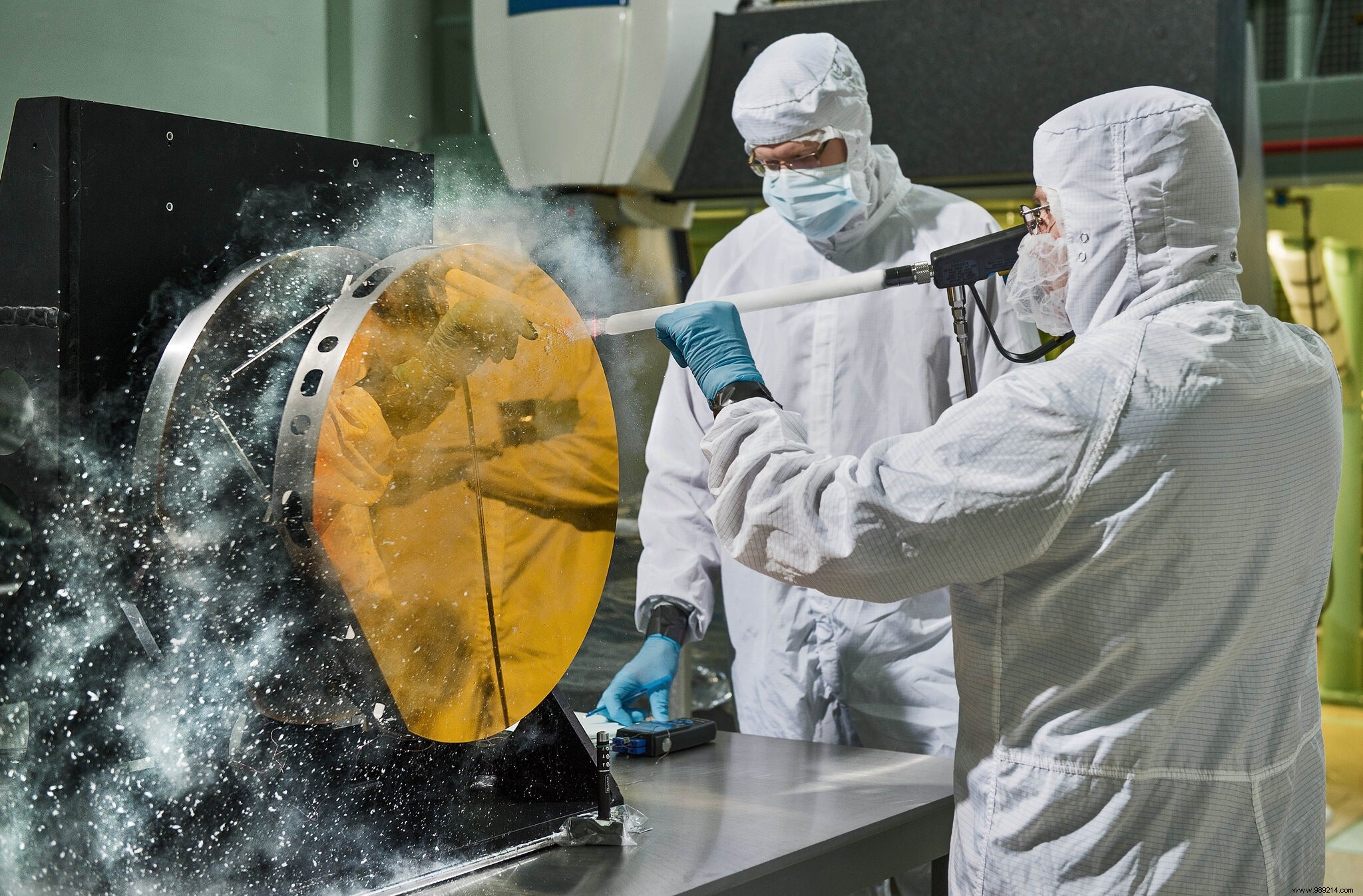On Tuesday, January 4, NASA operators successfully completed the release process for the James Webb Telescope sunshield. This was the most complex and delicate operation of the long deployment phase of the observatory. The mission team can now move on to the next important item on their to-do list:deploying the secondary and primary mirrors.
The James Webb Telescope continues its millimetric deployment process in space. This Monday and Tuesday, mission controllers began and closed the deployment of its huge sun visor, a five-layered shield the size of a tennis court. According to NASA, each sheet is about as thin as a human hair and covered with reflective metal, which reduces exposure to heat from the Sun, Earth and Moon.
The main mirror of the James Webb Telescope, the largest ever built by NASA (6.5 m in diameter) consists of eighteen hexagonally shaped segments constructed from beryllium, a very light metal. Each of these structures is lined with gold, the material offering the highest reflectivity over a very wide band of wavelengths.
This mirror comes in three parts:a central platform and two smaller side "wings". The latter were folded before launch so that the assembly could fit inside the fairing of the Ariane 5 rocket. The deployment of the main mirror will therefore consist of deploying these two wings .
The secondary mirror represents the second surface, after the primary mirror, that light will hit on its way to the telescope's four science instruments. The 0.74m structure sits at the end of several spires that need to be extended. The secondary mirror will be deployed first. The whole process should seriously start this weekend and last about ten days .

If all goes according to plan, the telescope will then glide into orbit around Lagrange point 2 about 29 days after launch on January 23 . At this point, the mission team will still need to precisely align the eighteen primary mirror segments so that they act as a single light-gathering surface.
To do this, mission controllers will turn on the near infrared camera (NIRCam) of the telescope. This instrument is designed to detect distortions in incoming light with extreme precision. From then on, 126 actuators will take care of positioning, bending or subtly bending each segment according to the data transmitted by the instrument.
The following weeks will involve final calibrations and completing the commissioning process. Scientific operations should finally begin this summer and last between five and ten years .